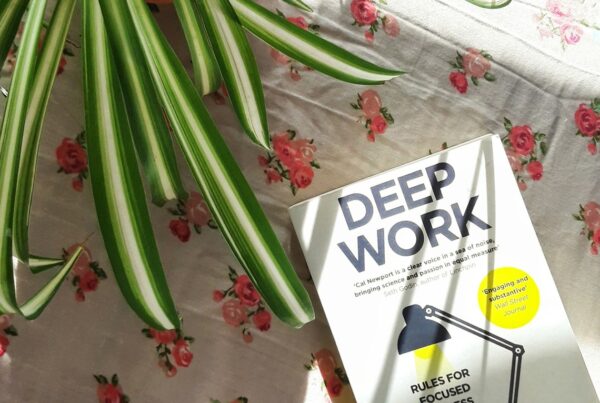There are two SEO questions we get at Peaceful Media more often than any other:
A) What SEO keywords should I use on my website or blog?
B) How do I optimize my pages and posts for SEO?
I’m going to outline an onpage keyword strategy for a blog, but the exact same principles apply to a page on your website. And what better blog to optimize than the one you’re reading right now? Let me show you exactly how I would optimize this blog.
Ready?? Ok let’s dive in.
Step 1 – Select Your SEO Keyphrase
I’ll post an entire article about keyword research in the near future. But for now, let’s say I’ve done my research and I’ve decided on the keyphrase “How To Optimize Blog Posts For SEO.”
Sample keyword list:

Step 2 – Title Tags & Meta Descriptions
What is your Title Tag? Good question. Your title tag is one of the first things that Google notices about a webpage or blog. You know that large, dark blue text you see when you do a Google Search? That is the Title Tag. A good Title Tag should be 70 characters or fewer.

What about Meta Descriptions? Those are the longer descriptions right below the Title Tag. Meta Descriptions should be 160 characters or fewer (though recently Google has been allowing for much longer Meta Descriptions). Be sure to Google Search yourself once you’ve set your description, if Google is truncating it, shorten it!

If you’re using WordPress, you should certainly download the Yoast SEO plugin. Once inside, changing the Title Tags and Meta Descriptions is super easy! Once you’ve installed the plugin, scroll to the bottom of your post and you’ll see this (easy to use) SEO screen when you click “edit snippet.”

You’ll notice ^^^ that I used the EXACT keyword in the Title Tag and a close approximate in the Meta Description. Google has stated in the past that they don’t even count the meta description when ranking your site for SEO (the veracity of this statement is anyone’s guess), but my personal convention is to always use my exact keyphrase somewhere in the Title Tag and make sure it’s pretty darn close in the Meta Description. In this case, I wanted to use the keyphrase in the form of a question to make it sound a little bit more human.
Good SEO shouldn’t sound like a robot has written your blog or your SEO tags.
Step 3 – Body Copy
I know I just said this above, but it’s worth repeating—do not get so overzealous about getting SEO keywords into your blog or webpage that you corrupt your own voice as a writer. With the sheer volume of content that is available online these days, your unique voice (charming, funny, blunt, inviting, inventive, etc) is the best chance you have to cut through what Jeff Walker calls the “digital fog” (meaning, an oversaturation of online content). There is a way to do both! It just takes a little TLC.
Now, that’s pretty easy for me to say as I’m writing a blog about SEO keywords and got to literally tell you what SEO keyphrase I went after. Pretty on the nose I know.
Your exact keyphrase should be found at least twice on the blog or webpage, with the first example being as close to the top of the page as possible. Did you notice me sneak the title of my article into my first full paragraph?

Step 4 – What About My Images, John?
I’m so glad you asked. This part is so easy. When images are posted online, make sure you TITLE the image something close to your chosen SEO keyword and also include that keyword in the ALTERNATE TEXT. In WordPress you can set those fields here:

Step 5 – Links, Internal & External
When you think about Google and why it chooses to rank the pages it ranks, you should always think about LINKS. Every time someone links to your site, Google thinks of that as one person “voting” for you and as a credible source that your website or blog is about what you say it’s about.
So what kinds of links are there and where do links come from?
🔗 Internal Links
These are links that come from within your own site.

🔗 External Links
These are links that come from someone else’s website. External links are SEO gold, but much harder to come by. There is a whole article that could be written about best practices to obtain new external links (in the SEO world called “link building”) but for the purposes of this article, you should know that the more links you have, the more Google will take your blog seriously.
If you’re interested in learning more about link building, MOZ has written a great article about this and is a trusted resource for us at Peaceful Media as we try to keep up with ever-changing SEO best practices and techniques. And did you notice what I just did there? I just gave MOZ one new external link.
Final Thoughts
There are a variety of ways to get traffic to your website or blog, but SEO, for the most part, is free. Once you’ve done the work to optimize the keywords on your page and boosted your credibility and authority by obtaining external links to the page, this is traffic you don’t have to pay for. Depending on what industry you work in, this could save you hundreds or thousands of dollars a month.
That said, SEO is neither a silver bullet nor is it easy. Make sure you are doing thorough keyword research to find out what keywords you have the plausibility of competing for. With 97% of clicks happening on the first page of Google results, landing on the second page for a keyword just isn’t going to help you much.
One last thing—SEO takes time. Occasionally we will work with a client who does the simple SEO tips described above and immediately jumps to the first page on Google. This is the exception and not the rule. What is much more likely is that it will take months (or even years) to reach the first page, especially if you are a small business and just starting out. Don’t let this discourage you though! YOU CAN DO THIS. If your marketing budget allows for it, sign up for a keyword tracking tool like MOZ or SE Ranking. That way when you change you optimize your blog or webpage, you can track how well your page is competing for your new SEO keyword.
Good luck! 🙂






